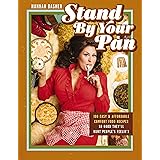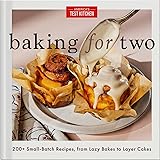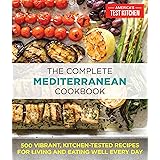There is a certain satisfaction in creating something delicious and wholesome from scratch, especially when it is surprisingly simple. For many home cooks, the idea of making fresh dairy products, such as cottage cheese, might seem daunting. However, it can be a truly straightforward process. Only a couple of ingredients are needed to transform everyday milk into a versatile, protein-rich staple that elevates many meals. The simple steps outlined in the video above reveal just how accessible this culinary craft truly is.
Understanding the Appeal of Homemade Cottage Cheese
Homemade cottage cheese offers several distinct advantages over its store-bought counterparts. For instance, the freshest ingredients are often preferred, and making cottage cheese at home provides complete control over what goes into it. Additives, preservatives, or excessive sodium are easily avoided. Furthermore, making this dairy delight can be a cost-effective way to enjoy a high-quality product.
Fundamentally, cottage cheese is a fresh cheese made from curdled milk. The process involves separating the milk solids (curds) from the liquid (whey) using an acid. What results is a mild-flavored, lumpy, and creamy cheese that is incredibly versatile in the kitchen. Its high protein content also makes it a popular choice for those focusing on healthy eating.
The Essential Ingredients for Your Homemade Cottage Cheese
The beauty of this recipe lies in its simplicity. Only two main ingredients are required to embark on this culinary adventure: milk and an acidic agent. However, the choices made for each can subtly influence the final product.
Choosing Your Milk: A Foundation for Flavor and Texture
The milk chosen forms the entire basis of your cottage cheese. While 1.5 liters of milk are used in the video, the type of milk can significantly impact the yield and texture.
-
Whole Milk: Often considered the best choice for homemade cottage cheese. It yields a richer, creamier curd due to its higher fat content. The cottage cheese produced tends to be more tender and flavorful.
-
Low-Fat or Skim Milk: These options result in a drier, sometimes firmer curd. While perfectly suitable for those watching their fat intake, the texture might be less creamy. It is worth noting that the yield from lower-fat milk can also be slightly less.
-
Non-Homogenized Milk: When available, this type of milk can produce particularly delicate curds. However, any fresh pasteurized milk will work wonderfully for making homemade cottage cheese.
Regardless of the fat content, ensuring the milk is fresh is paramount. Older milk may not curdle as effectively, leading to a less successful outcome.
Selecting Your Acidic Agent: The Curdling Catalyst
The acidic agent is responsible for separating the milk into curds and whey. The video specifically mentions apple cider vinegar or lemon juice, and for good reason, as they both work effectively. Exactly three tablespoons of apple cider vinegar are used, but a similar amount of fresh lemon juice can be substituted.
-
Apple Cider Vinegar: This common pantry staple provides a clean break, forming distinct curds. It also imparts a very subtle, pleasant tang that complements the milk’s flavor.
-
Lemon Juice: Freshly squeezed lemon juice is another excellent choice. It works similarly to vinegar, producing clear curds and adding a bright, citrusy note that can be quite refreshing.
-
White Vinegar: While effective, white vinegar is sometimes avoided as it can impart a slightly sharper, less palatable flavor if too much is used or if the curds are not rinsed thoroughly.
A note on quantity: The amount of acid can be adjusted slightly based on the milk’s freshness and specific properties. If curds do not form adequately after the initial addition, a small extra tablespoon can be carefully incorporated.
Step-by-Step: Crafting Your Own Homemade Cottage Cheese
With the ingredients at hand, the process of making homemade cottage cheese is quite methodical. Each step plays a crucial role in achieving the desired texture and taste.
Heating the Milk to Perfection
A fairly large pot is needed for this process, as milk can foam and expand as it heats. Pour 1.5 liters of milk into the pot and place it over medium heat. The instruction to “heat the milk until foam appears” signifies reaching the scalding point, which is typically just below boiling, around 180-190°F (82-88°C).
Gentle heating is important. Stir the milk occasionally to prevent scorching at the bottom of the pot. A thin skin or layer of foam will start to form on the surface, indicating it is ready for the next step. Boiling the milk vigorously should be avoided, as this can affect the texture of the resulting curds.
Introducing the Acid and Witnessing the Transformation
Once the milk is sufficiently heated, the chosen acid is carefully poured in. As specified, three tablespoons of apple cider vinegar are a good starting point. Stir the liquid gently but consistently for about five minutes. During this time, a fascinating chemical reaction takes place.
The acid causes the casein proteins in the milk to coagulate, separating them from the watery whey. This is observed as small, white clumps (the curds) forming and visibly separating from a translucent, yellowish liquid (the whey). Continuing to cook for five minutes helps to firm up these curds, ensuring a better yield and texture.
Straining the Curds: Achieving the Right Consistency
Once the curds have fully formed and firmed up, they are ready to be strained. A strainer, ideally lined with cheesecloth for a finer separation, is suspended over a bowl. The entire contents of the pot are carefully transferred into the prepared strainer.
Allow the curds to drain for at least 15-30 minutes, or even longer, depending on the desired dryness of the cottage cheese. The more whey that drains off, the drier and firmer the curds will become. Some people prefer a very dry curd, while others enjoy a slightly wetter, creamier consistency. The collected whey, a nutrient-rich byproduct, can be reserved for use in baking, smoothies, or even watering plants.
Cooling and Finishing Touches
After straining, the cheese curds are transferred to a container and put into the refrigerator to cool. Chilling the cottage cheese allows the flavors to meld and the texture to set further. Once thoroughly cooled, the homemade cottage cheese is ready to be enjoyed.
At this point, it is common practice to season the cottage cheese with a pinch of salt to enhance its flavor. For those who prefer a creamier texture, a small amount of milk, cream, or even sour cream can be stirred into the curds before serving. This step allows for personal customization of the final product.
Beyond the Recipe: Customizing Your Cottage Cheese
The basic recipe provides a fantastic foundation, but homemade cottage cheese can be easily customized to suit individual preferences and culinary needs. Experimentation is encouraged!
Adjusting Texture and Richness
The texture of homemade cottage cheese is very much within your control. For example, if a drier, more crumbly cottage cheese is preferred, simply allow the curds to drain for a longer period. On the other hand, if a creamier, softer texture is desired, either drain for a shorter time or stir in a spoonful or two of fresh milk, cream, or even yogurt after straining and chilling.
Flavor Variations: Sweet or Savory
Once the plain homemade cottage cheese is ready, it becomes a canvas for a myriad of flavors. For instance, a sweet version can be created by adding fresh fruit, a drizzle of honey or maple syrup, or a sprinkle of cinnamon. Alternatively, a savory profile can be achieved by mixing in chopped fresh herbs like chives or dill, finely diced vegetables such as cucumber or bell pepper, or a dash of black pepper and garlic powder.
Enjoying Your Freshly Made Homemade Cottage Cheese
Homemade cottage cheese is a truly versatile ingredient, much more than simply an “addition to sandwiches.” Its mild flavor and rich protein content make it suitable for a wide array of dishes.
-
Breakfast Bowls: A popular choice is to serve it with fresh berries, nuts, and a touch of granola for a healthy and satisfying start to the day.
-
Salad Topping: It can be spooned onto green salads, offering a creamy texture and a protein boost.
-
Savory Spreads and Dips: Blended with herbs and spices, it makes a lighter, healthier alternative to traditional cream cheese or sour cream-based dips.
-
Baking Ingredient: Cottage cheese can be incorporated into recipes for pancakes, muffins, or even lasagna, adding moisture and protein.
-
Side Dish: A simple bowl of cottage cheese with a crack of black pepper and a drizzle of olive oil can accompany many main courses.
The freshness and purity of homemade cottage cheese truly shine through in these applications. With just two main ingredients and a few simple steps, a truly rewarding and wholesome food item is created.











